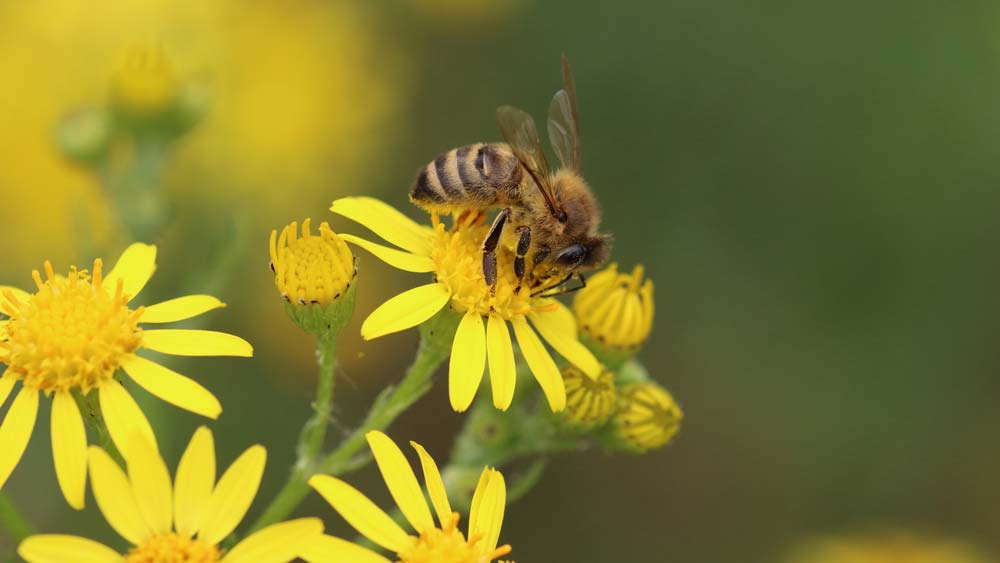Bees are insects that play an essential role in pollinating the foods we consume today. Around the world, there are approximately 20,000 different species of bees, from which 4.000 species serve as pollinating agents. Among them, the honey bees are responsible for a large part of the pollination of plants and crops, and it is due to their hard work that we can consume honey. “Bumblebees can also produce honey, but since only the queen survives the winter, it doesn’t need to stock large amounts of food,” says Gibbons (2003), in contrast to the honey bees, which stock honey for all the hives to survive the cold seasons.
Honey bees live in colonies, and it is inside a hive that they will store the honey and take care of the eggs and lava. A hive has the presence of only one queen, which is responsible for laying all the fertilized eggs, being able to lay about 2000 eggs in just one day. There are also hundreds of male honey bees or drones, and their only function is to copulate with the queen, and once they fulfill their part of the hive, they lose their lives. Finally, there are the worker bees that are extremely loyal to the queen. A hive can have up to 80,000 bees and are responsible for the entire functioning of the hive. Despite a large number of workers, they can meticulously divide the work among themselves, according to Hertzberg (2019), who says, “this is possible because bees are born with a natural ability that guides them according to the needs of the hive.”.
Pollination is the act of transfering the pollen grains contained in the male part of a flower (anther) to the female part (stigma), which would be the beginning of the procedure for the reproduction of new plants. Pollination methods can be carried out in a natural way, such as through wind or water. When pollination happens in this way, it is called an abiotic agent. When it occurs through other living beings, such as birds, insects, and even bats, it is classified as biotic agents. Among insects, bees are crucial for the reproduction of new plants, as only one bee may be able to visit around 2,000 flowers a day to collect the nectar, which will later turn into the honey we consume. Thanks to their constant harvest, it can be estimated that they are responsible for 80% of the pollination of world crops, thus, making it possible to generate more food for other animals and helping in the production of the food we consume.
Research has shown that between 2015 and 2016, in the United States, although bees are not in danger of extinction, beekeepers lost about 44 percent of the bee colonies they care for, raising severe concerns if they disappear. This loss can be directly linked to climate change, pesticides used on farms, parasites that bring disease to bees, and the loss of their natural habitats. As it is an organism considered very important not only for us humans but mainly for the health of our planet, it is possible to find several organizations willing to raise awareness about the danger of extinction of these insects and teach small gestures, such as planting vegetables and flowers that bees like, to preserve them.
References
Gibbons, W 2003, Bumblebees produce honey, too, Savannah River Ecology Laboratory University of Georgia, viewed 14 October 2021, http://archive-srel.uga.edu/outreach/ecoviews/ecoview030901.htm.
Hertzberg, R 2019, With brains the size of sesame seeds, honeybees have to work together in different capacities to maintain a healthy nest, viewed 14 October 2021, https://www.nationalgeographic.com/animals/article/honey-bee-job-queen-hive-animals.
A Importância das Abelhas e Porque Precisamos Delas 2018, National Geographic, viewed 15 October 2021, https://www.natgeo.pt/animais/2018/08/importancia-das-abelhas-e-porque-precisamos-delas.
